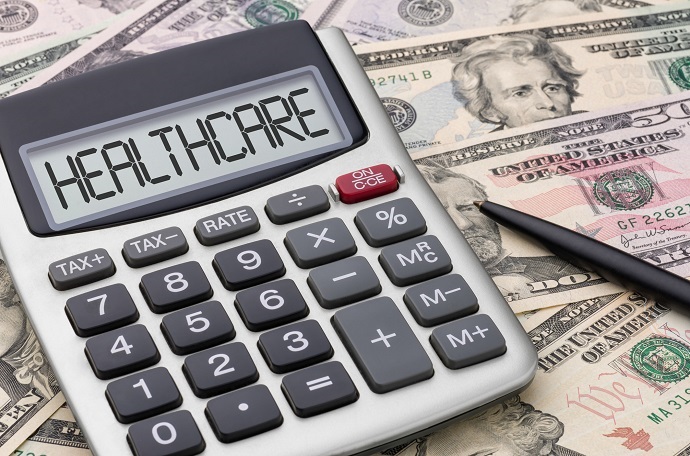Medicare Spending, Prices Drive Healthcare Spending Growth
National healthcare spending will accelerate at a rate of 5.5 percent by 2026 as Medicare spending and service prices continue to climb, CMS reports.

Source: Thinkstock
- The healthcare share of the economy should reach 19.7 percent by 2026 as the average annual rate of national healthcare spending growth rate and Medicare spending accelerates, the CMS Office of the Actuary recently projected.
The data, published in Health Affairs, showed that national healthcare spending will grow at an average annual rate of 5.5 percent over the next eight years.
The projected healthcare spending growth rate will outpace the average estimated GDP growth rate by 1 percentage point.
“Although there remains considerable uncertainty regarding the future of health policy, we expect health spending growth to increase over this next decade as a result of economic and demographic trends,” stated Gigi Cuckler, an economist in the Office of the Actuary at CMS and lead author of the study. “Moreover, it is expected that employers, insurers, and other payers will continue to work to manage the use and cost of healthcare goods and services.”
Medicare spending and enrollment increases are major economic and demographic factors contributing to healthcare spending growth. Medicare enrollment should spike and private insurance enrollment should drop as Baby Boomers age into the federal healthcare program.
Economists at the Office of the Actuary projected Medicare spending growth to accelerate to 5 percent in 2017 from just 3.6 percent in 2016.
Faster projected growth in spending per beneficiary will jumpstart Medicare spending increases in 2017, with growth in spending per beneficiary rising from 0.8 percent in 2016 to 5 percent in 2017.
Medicare spending should continue to move faster as 2019 approaches, the report showed. Economists estimated that Medicare spending will grow 2 percentage points compared to 2018’s rate.
The acceleration stems from the first payment period under MACRA’s Quality Payment Program. On top of Medicare enrollment growth leading to increased use and intensity of services, Medicare will also start reimbursing eligible clinicians for participating in either the Merit-Based Incentive Payment System (MIPS) or Advanced Alternative Payment Models (APMs).
Eligible clinicians face up to a four percent Medicare payment adjustment in 2019 based on 2017 performance in MIPS.
The maximum MIPS payment adjustment is slated to increase to positive and negative five percent by 2020. The adjustment factor will continue to increase each year until the 2022 payment period when the maximum adjustment will be positive or negative nine percent.
Advanced APM participants can earn an automatic five percent incentive payment.
In contrast, private health insurance spending growth should slow to an average of 4.1 percent between 2019 to 2020.
Medicare spending growth will continue to outpace the rate of private health insurance spending into the study’s late period between 2021 to 2026.
As Baby Boomers continue to age into Medicare, the federal healthcare program’s spending growth should increase to 7.7 percent, while private health insurance spending growth should slightly rise to 4.8 percent.
Additionally, Medicaid spending is expected to experience some growth, with the growth rate increasing four percentage points in 2018.
However, Medicaid spending growth should slightly fall to 6.1 percent by the study’s later period. The rate should still exceed the growth of private health insurance spending.
With Medicaid and Medicare spending exceeding that of private health insurance, about 47 percent of national healthcare spending should stem from federal, state, and local governments by 2026, the report stated. The anticipated shared of government healthcare spending will be up from 45 percent in 2016.
Conversely, the estimated share of healthcare spending coming from businesses, households, and other private revenues should decrease 2 percentage points by 2026.
In addition to economic and demographic factors, such as changes in estimated income growth and increased Medicare enrollment, Cuckler and her team also pointed to price growth as a healthcare spending driver.
Economists projected healthcare prices to increase from historically low rates of 1.1 percent per year from 2014 to 2016. They estimated healthcare prices to grow gradually at an average of 2.5 percent per year between 2017 to 2026.
The prescription drug sector should see the fastest annual healthcare spending growth, economists added. They projected the prescription drug sector to experience average annual spending growth of 6.3 percent per year during the study’s period.
The increased utilization and spending on specialty drugs will drive the significant growth in prescription drug spending.
